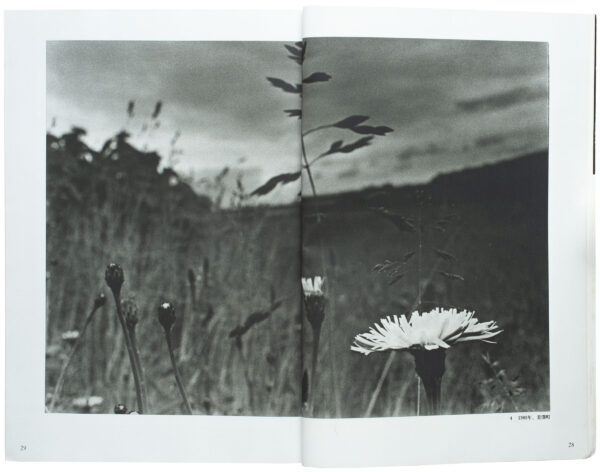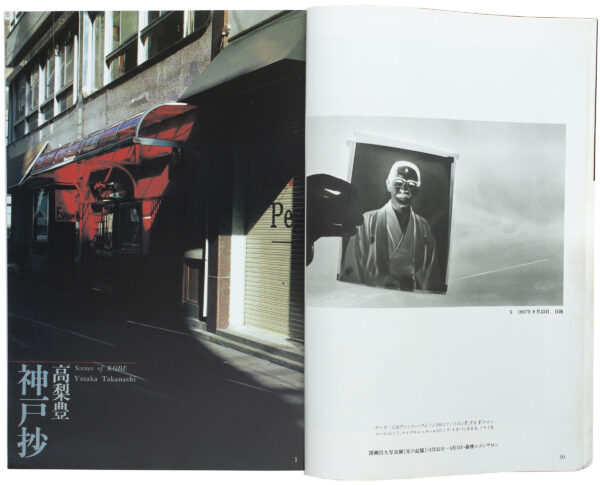Nippon Camera 日本カメラ
March 1950 - May 2021
Monthly
B5 size, approx. 18 x 26 cm
Founding Publisher: Kōgeisha ( Tokyo)
Founding Editor: Fujikawa Toshiyuki
Nippon Camera started as a bimonthly magazine as the successor to the book series Amachua Shashin Sōsho ( Amateur Photography Library; October 1948 - December 1949, 7 volumes), each volume of which had been devoted to a special topic as ’Skillful Use of the Camera’.
It became a monthly magazine from July 1951
The publishers name was changed to Nippon Camera-sha in November 1953.
The editors, photography critic Tanaka Masao and former Shashin no Kyōshitsu editor Ikegami Yūichi, maintained a careful balance between amateur and professional photography.
Photographer Kajiwara Takao served as editor from 1975 to 1998. Together with Asahi Camera, Nippon Camera has remained one of the most popular photography magazines in Japan.
Almost a year after Asahi Camera, Nippon Camera magazine had ceased publication with the May 2021 issue. Their official notice dated April 15, 2021 only said that, “It has become difficult to continue publishing the magazine.”
Tokyo-based Nippon Camera-sha, the company publishing the magazine, also dissolved, on April 30, 2021. The company also published how-to camera magazine-books and photo technique books, so all these disappeared too.
.

Nippon Camera March 1978
Editor: Kajiwara Takao
Cover: Nakamura Masaya
Cover Design: Shiraiwa Tomiyasu
322 pages, gravure printing
Selection of content;
Christian Vogt-2, 8 pages color / Ohe Tohru: Woman, 5 pages color / Tomiyama Haruo; Memories in Sado Island, 5 pages color / Akiyama Shotaro: Forms on the Street, 6 pages color / Hayashi Tadahiko: Representatives of Japanese artists -3 Mr. Sen Sohshitsu, 2 color pages/spread / Akiyama Shotaro: : Four Seasons-27, 3 pages color / Hanabusa Shinzo: Children, 8 pages b&w / Suda Issei: Country of Folk Songs -3, 10 pages b&w / Kotoku Hiromi: Wild Waves, 6 pages b&w / Chifusa Teru: Paris in Winter, 5 pages b&w / Yukimatsu Satoru: Woman in Downtown, 4 pages b&w / Takahashi Fumiko: Quietude, 4 pages b&w / Kurihara Tatsuo: New Life in America-15, 6 pages b&w .
exhibitions, photocontests, testreports, advice corner, photo news, essays, etc.
Nippon Camera March 1978
Editor: Kajiwara Takao
Cover: Nakamura Masaya
Cover Design: Shiraiwa Tomiyasu
322 pages, gravure printing
Selection of content;
Christian Vogt-2, 8 pages color / Ohe Tohru: Woman, 5 pages color / Tomiyama Haruo; Memories in Sado Island, 5 pages color / Akiyama Shotaro: Forms on the Street, 6 pages color / Hayashi Tadahiko: Representatives of Japanese artists -3 Mr. Sen Sohshitsu, 2 color pages/spread / Akiyama Shotaro: : Four Seasons-27, 3 pages color / Hanabusa Shinzo: Children, 8 pages b&w / Suda Issei: Country of Folk Songs -3, 10 pages b&w / Kotoku Hiromi: Wild Waves, 6 pages b&w / Chifusa Teru: Paris in Winter, 5 pages b&w / Yukimatsu Satoru: Woman in Downtown, 4 pages b&w / Takahashi Fumiko: Quietude, 4 pages b&w / Kurihara Tatsuo: New Life in America-15, 6 pages b&w .
exhibitions, photocontests, testreports, advice corner, photo news, essays, etc.
.
Suda Issei; Country of Folk Song - 3, 10 pages.
Suda's first photobook contains his most representative work.
Fūshi Kaden is part of the Asahi Sonorama series of photobooks, 27 volumes published between 1977 and 1980
Suda Issei: Fūshi Kaden; Sonorama Shashin Sensho 16.
20 x 20,3 cm, 120 pages, 100 B&W photographes in monotone gravure Hardcover, dust jacket
in monotone gravure
Asahi Sonorama 1978
“Suda’s photography seems to be trying to grasp scenes remembered from bygone days, preserved despite the passage of time - everyday life, local festivals, the sliding doors typical of a traditional Japanese home, children dressed up for special occasions, a sleeping cat, an old woman with flowers, kids on a school trip, or the painted face of a Kabuki actor.
Yet these are not simple idealizations of the past. The way the photographs have been taken reveals something slightly unsettled. Many of the subjects’ gestures seem suspended in time, as though Suda took the photograph one moment too soon or too late. Someone is just about to turn; someone blinks just when the shutter is released; a participant in a festival holds his hands in the air mid-clap and with his leg at a weird angle.(…)
The matter-of-factness of Suda’s photography gives a sense of balance and detachment while at the same time suggesting an otherworldliness”.(…)
Ryūchi Kaneko and Ivan Vartanian ; Japanese Photobooks of the 1960s and 1970s, Aperture / Goliga Books 2009
.

Nippon Camera April 1988
Editor : Kajiwara Takao
Cover: Yoshida Daitomo
340 pages, gravure printing
Selection of content;
Fujita Hiroshi - Spring of Yamato 10 pages in color / Fukase Masahisa - Memories of My Father 8 pages in b&w / Takanashi Yukata - Scenes of Kobe 8 pages in color / Sawatari Hajime - Seaside 5 pages in color / Uchida Kyoku - Dark Light 7 pages in b&w / Hara Yoshiichi - Mandala Zukan 2 6 pages in b&w / Unesada Kenji - Cherry blossoms of Kyoto 7 in b&w.
Exhibition review / book review /exhibition guide / Nippon Camera Photo Contest: A.Large b&w print - B. Small b&w print - C. Color slides - D. Color prints. / New products / Video corner /Test report / Trial: Introduction to large format cameras 2 / Special article: Composing, a key to better landscape photography
Nippon Camera April 1988
Editor : Kajiwara Takao
Cover: Yoshida Daitomo
340 pages, gravure printing
Selection of content;
Fujita Hiroshi - Spring of Yamato 10 pages in color / Fukase Masahisa - Memories of My Father 8 pages in b&w / Takanashi Yukata - Scenes of Kobe 8 pages in color / Sawatari Hajime - Seaside 5 pages in color / Uchida Kyoku - Dark Light 7 pages in b&w / Hara Yoshiichi - Mandala Zukan 2 6 pages in b&w / Unesada Kenji - Cherry blossoms of Kyoto 7 in b&w.
Exhibition review / book review /exhibition guide / Nippon Camera Photo Contest: A.Large b&w print - B. Small b&w print - C. Color slides - D. Color prints. / New products / Video corner /Test report / Trial: Introduction to large format cameras 2 / Special article: Composing, a key to better landscape photography
.
Fukase Masahisa; Memories of Father, 8 pages.
Memories of Father (父の記憶: Chichi no Kioku)
Edited by Akira Hasegawa
. Design: Kazuo Nitta
161 pages
. 200 × (W) 220 mm
Softcover with dust jacket
IPC Inter Press Corporation 1991
Hara Yoshiichi ; Mandala Zukan 2 , 6 pages.
.
Mandala Zukan 曼陀羅図鑑
Softcover, 21cm x 21cm, approx. 610 pages, 300 photos.
Banseisha, 1988
.
.



















